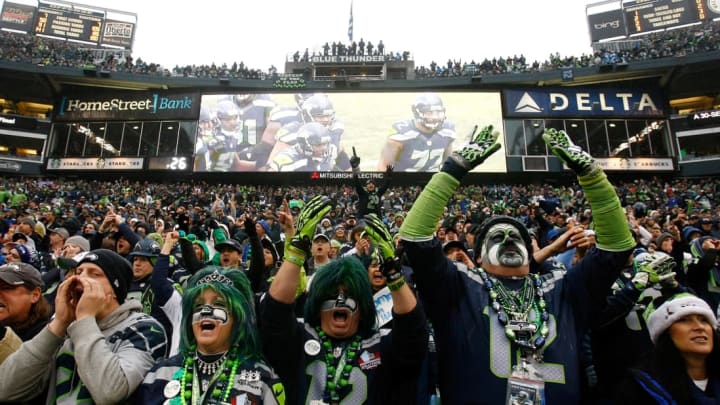If you've ever watched a Seattle Seahawks home game on TV, you've surely heard the commentators talk about how loud it is at CenturyLink Field. ("By golly, Jim, it's loud in here," or something to that effect.) It's true—the stadium is remarkably noisy. Last season it was awarded the Guinness World Record for the loudest open-air stadium in the world when it reached 137.6 decibels during a Monday night game against the Saints. Is that loud? Yeah, it's pretty loud.
This noise isn't just for setting world records. Because of the cacophony of shrieks, hoots, and hollers, the Seahawks have the best home field advantage of any team in the NFL. Opposing offenses can't hear play calls, and because of this they rack up false start penalties at an extremely high rate.
But why is CenturyLink so loud?
Is it because Seattle's fans love their team more than you love yours and they're able to yell louder because of this? Are their lungs more powerful because of the crisp Pacific Northwest air, which allows them to push out more impressive screams? In short: not exactly.
While Seattle's fans are enthusiastic, CenturyLink reaches those record-breaking decibel levels because of its design. Paul Allen, the billionaire owner of the team, explicitly wanted a stadium that would be loud, so he approached architect Jon Niemuth with this request. The place, which was built in 2002, is constructed to be loud.
CenturyLink sits on the smallest footprint of any stadium in the NFL. Despite this, it's not small. It holds 67,000 fans, and they are piled steeply to form a tube of swirling sound. As Niemuth told Sports Illustrated, “If you’re trying to create a container, the bigger the cup you can make it the better.”
Sound escapes upwards in open-air stadiums (it's why domes are always so loud), so to counter this, about 70% of CenturyLink's seats are covered by canopies. These canopies are shaped like parabolas, and they point the sound back at the field. Adding to all this are the aluminum bleachers that fill the stands by the north end zone. When stomped on, these create an almighty racket.
Put all these factors together, and you have a recipe for one loud stadium.
